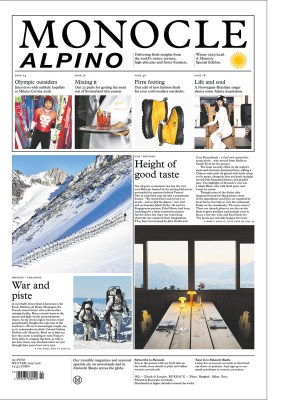What Osaka’s 2025 Expo taught the world about temporary and sustainable greenery
Temporary plant displays are a go-to way to decorate trade fairs but organisers often fail putting thought into them. Ryokukou Garden is challenging the way that we think about short-term greenery.
Temporary greenery is everywhere, draped across shops, trade fair floors or pop-up restaurants. Yet most plants hauled in for the week share the same bleak fate. In Osaka, family-run landscaping company Ryokukou Garden showcased its green-fingered skills to an international audience when Expo 2025 rolled into town.
Responsible for overseeing greenery at the pavilions occupied by the UAE, the EU, Germany, Austria and Panasonic, Ryokukou Garden showed off a simple but effective philosophy that the wasteful trade-show and pop-up circuits should seek to cultivate. Namely it sees plants as living collaborators, not disposable decor, and lets them take root and survive when the trade shows shut.

“We’re not just landscape designers – we grow trees at our own nursery too,” Toshiki Tanisaki, who heads the company’s design work, tells Monocle. “That gives us a real understanding of what plants need to stay healthy.” Now joined by the fifth generation of the Tanisaki family, Ryokukou Garden assures its longevity through continuity. At 89, Toshiki’s grandfather remains involved in everyday maintenance at the nursery while his father manages construction. The three generations handle every stage of any given project, so each decision reflects a shared respect for the plants that they are working with.
At the Expo, the Tanisakis’ brief was simple: to create displays that would thrive throughout the event’s six-month run and be suitable for planting out afterwards. For larger plants, this meant making sure that they didn’t fully take root and could easily be craned out of the event space and replanted while avoiding undue stress. Their roots were wrapped in water-permeable landscaping fabric, preventing them from settling entirely in their temporary home. When choosing smaller plants, Toshiki prioritised perennials for longevity and ensured that they were extracted by hand once the Expo had run its course. “It’s very labour-intensive work,” he says. “You have to dig around very slowly and carefully so as not to disturb the roots.”
While Toshiki acknowledges that it’s common for healthy plants to be thrown out at the end of such events, Ryokukou Garden turned the process into a closed-loop system, one in which nature was not a prop but a partner. Crucially, he says that when a plant is designated for a temporary event, it doesn’t mean that we should treat it with less care. Instead, it’s an opportunity to plan for renewal – something that designers and architects the world over should consider when picking out greenery for their next event.
Monocle’s tips for a greener 2026
1.
Make a start.
Ryokukou Garden’s closed-loop system is admirable but there needs to be more than just one canny company pushing for temporary displays to be treated like an ongoing concern. Take a leaf from its book (or bush).
2.
Ditch the tree quotas.
Cities are blinded by big numbers and developers rush to plant saplings that offer no shade or cover. Context is everything.
3.
Get shaggy.
Keeping every lawn trimmed and weed-free might make sense at a royal residence but cities should leave spaces to go wild: grassy verges and unused railway lines can be left to develop into green corridors for flora and fauna.
4.
Avoid ‘green walls’.
These features can look appealing in renderings but they demand constant attention, care and cultivation to even stay presentable – which is why they often end up being left to wither.
5.
Go native.
Too many cities fall into the trap of planting what looks nice rather than what will thrive. Cities in the Gulf, for instance, should be looking at salt-loving halophytic plants or ghaf trees, rather than beautiful but thirsty and heat-sensitive species that wouldn’t last a day without the sprinklers.
Comment:
Trade shows are excellent places to get a snapshot of an industry, from arms fairs to design showcases, but they’re often wildly wasteful. Better practice means being thoughtful about a fair’s footprint.


